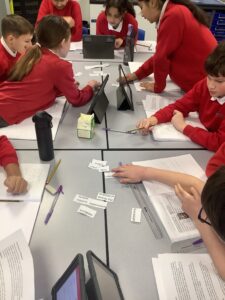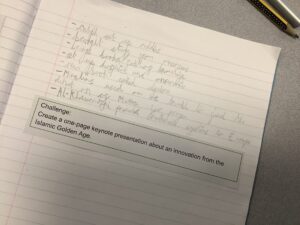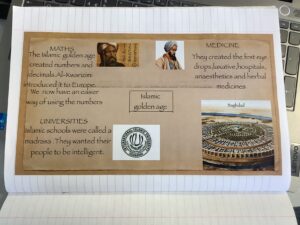Living and learning: I know what a drug is.
In Living and Learning, Year 4 have learnt about what a drug is and how to handle medicine and other household products safely.
We know that drugs are substances that have an effect on our mind or body.
We had a visit from D-Side Dave who taught us about alcohol. We spoke about how to identify if something has alcohol in it and why is it important that children do not consume alcohol until the legal age.
We learnt about how alcohol is measured and discussed why adults might choose to drink it.
We ended our lesson by trying on a pair of glasses that made us feel like we had drunk alcohol. It was funny to see how Year 4 reacted but provided us with a clear take home message, too.
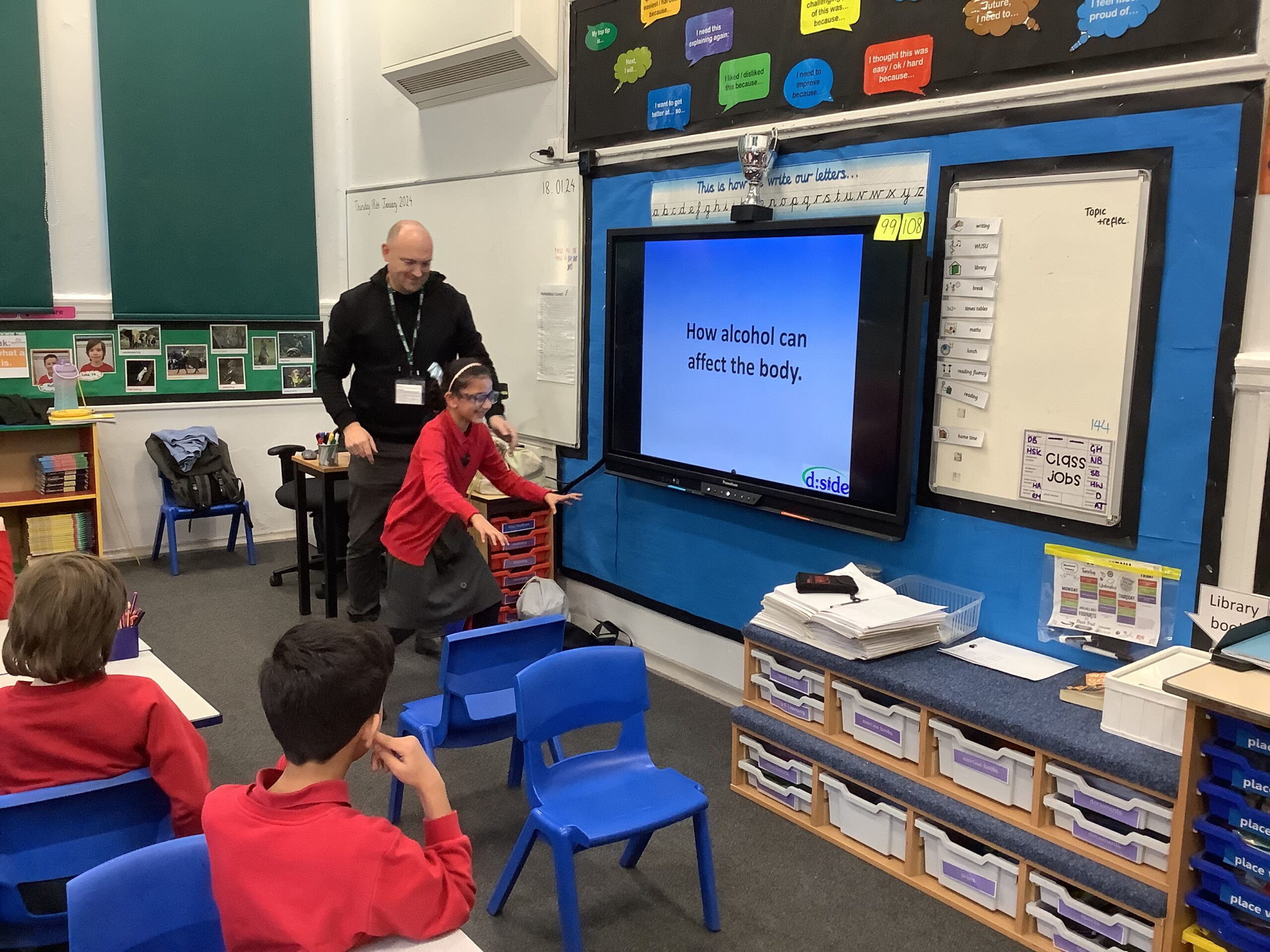

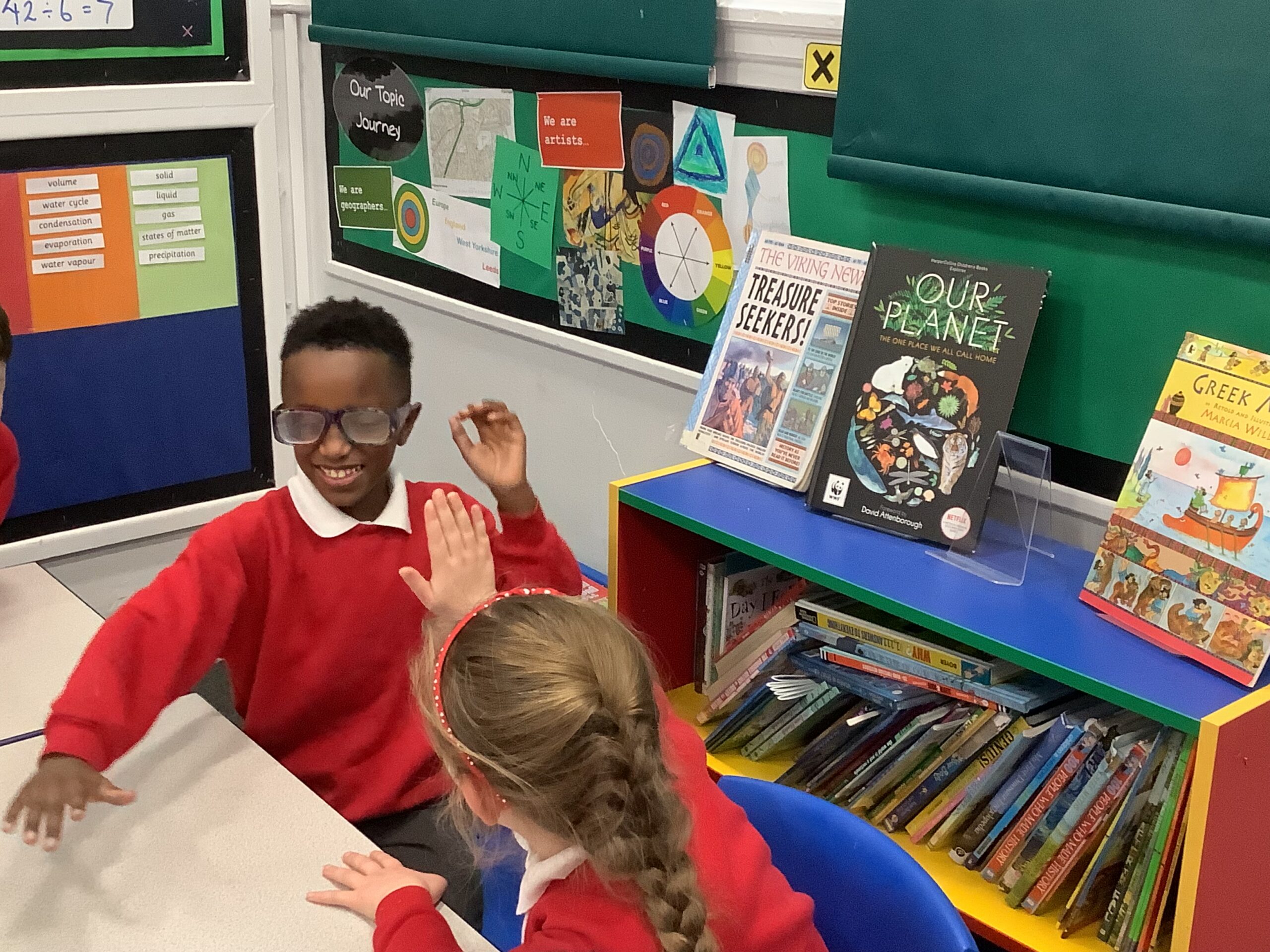
Writing: Were the early Islamic civilisation an advanced society?
In writing, we have been looking at discussions. The purpose of a discussion is to think about different sides of an argument. The question we are discussing is ‘Were the early Islamic civilisation an advanced society?’.
This question links to our history topic where we’ve been learning about the innovations of the early Islamic civilisation – a golden age. The children have started to write their discussions: introduction and for point. Tomorrow, we will be moving on to write the against point and conclusion.
Help at home: Discuss if the early Islamic civilisation were an advanced society. Use examples of why they were or why they were not.
Living and Learning: being safe
Being safe is a key part of our Living and Learning curriculum including a Staying Safe themed week coming up next term in July.
Year 2 learnt about being safe around the concept of consent (giving and receiving permission) in particular with their friends.
We use the term consent in different contexts in class including asking consent to post a photo of a child or their learning online. In this learning, we had some different permission scenarios to discuss and we did some role plays to test out some ways of asking for consent and what to do.
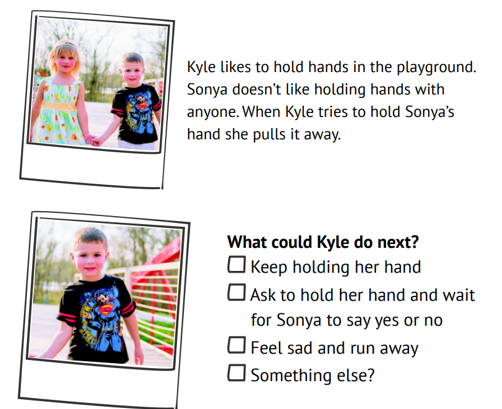
Help at home: look at the following prompts and talk this through with your child.
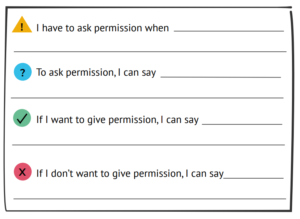
We also took part in the NSPCC Speak out Stay Safe online assembly.


During the assembly, we heard about different situations where children might not feel safe.

We thought about which grown-ups would be good to talk to in school and out of school (start telling other people). Brothers, sisters and friends would also be good to talk to and discuss feelings but telling a grown-up (over 18) would be the best thing to do to get help.

Our Living and Learning box, in the classroom, is another way the children can speak out and write down any worries.

We also heard about Childline – ask your child to show you the way to remember the number.
Help at home: Buddy Zone, on the Childline website, has some games and activities for the children to do.

Safe Choices – Leeds United Foundation
Y6 welcomed Vicky from the Leeds United Foundation to talk about safe choices both online and offline.
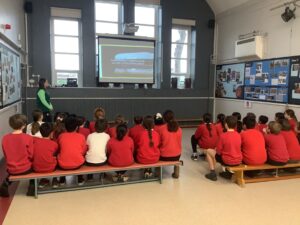
We heard from some inspiring people who are from Leeds about the choices they’ve made in their lives and the positive impact it’s had on them.
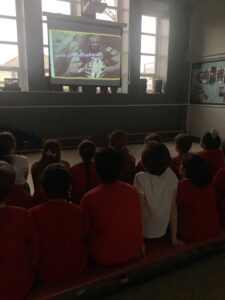
There was an interactive quiz about each of the four sections:
- online safety (social media)
- anti-social behaviour
- gangs
- knife crime
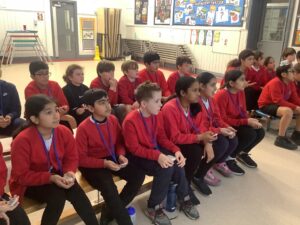
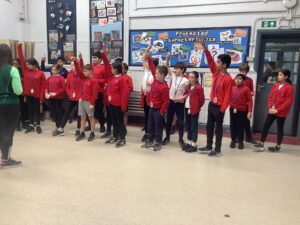
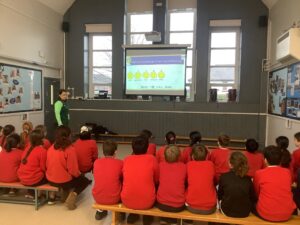
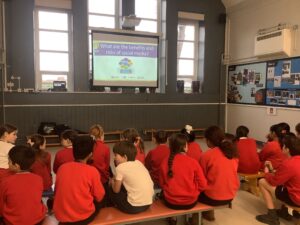
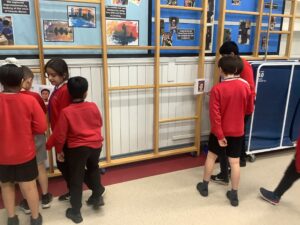
Help at home by discussing the main thing your child learnt about each category.
Living and Learning – Safer Internet Day!
Today is Safer Internet Day!
It was a chance to think about any worries we might have about using technology and the internet, but it’s also about celebrating all the fantastic things technology can help us with.
I know that some things online may not be true.
We discussed ‘fake news’ and what this means. We decided that if something is ‘fake’, it is not real and ‘news’ is information that is important. Fake news can be misleading and can give people the wrong impression or information.
We worked in groups to decide based on a ‘gut feeling’ whether a news headline was real or fake. A gut feeling is when we see or read something that just doesn’t feel right.
We then thought of other ways we could check if something is real or fake:
- Where has it come from?
- Who has posted this information?
- Is it a reliable news source like Newsround or First News?
- Can we see it across multiple reliable sources?
I know it’s important to check with a trusted adult before sharing personal information online.
Personal information is any information that is about who you are and what you do.
Websites and apps can collect our personal information and data and use it to provide services to us. For example, supermarkets might need your address if they are delivering your food or an app might need to know your age to know that you are old enough.
We need to keep this information safe whilst online and not give it to just anyone! We must always speak to a trusted adult before sharing any information online.
Help at home: Can you think of at least 4 pieces of personal information that we should keep private?
Living and Learning: Being safe
For the past two weeks, Year 5 have been looking at how to stay safe. Last week, we talked about permission and consent with regards to different types of touches.
We looked at a number of different scenarios and sorted them into 3 different categories: appropriate, inappropriate or depends on the situation. The children talked about how kicking is an inappropriate touch, high-five is appropriate and holding hands depends on the situation and who it is with.
We then moved on to discuss how appropriate touches feel on the outside and inside of our bodies. The children suggested that they might feel happy, safe, loved and comfortable and their body might be warm.
Help at home: Sort the following scenarios into appropriate, inappropriate or depends on the situation.
- biting
- linking arms
- hugging
- dancing together
We are mathematicians
This week in Year One we have been working really hard on their maths learning. We have been using the numicon this week to add single digit numbers to teen numbers. I was really impressed how the children took on this learning and also how they recorded it so carefully in their maths books. By the end of the week we were using the numicon to find all the number bonds to 20. It really helped that we had such a good knowledge of our number bonds to 10!
Well done Year 1.
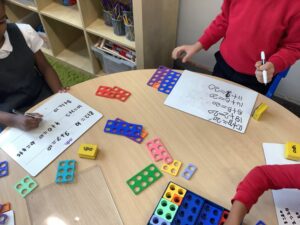
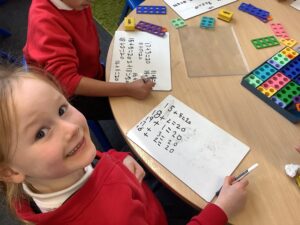
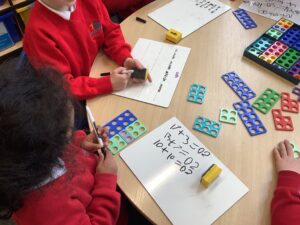
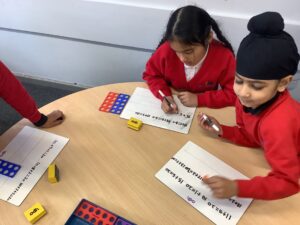
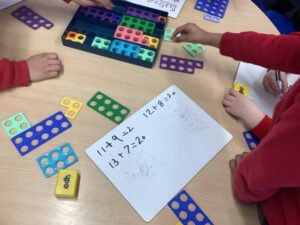
Help at home by practising both number bonds to 10 and number bonds to 20. Numbots is really good practice for this.
Trip to York!
Today, Year 3 and 4 visited York to go to the Yorkshire Museum and to see the flood defences.
Yorkshire Museum had exhibitions that were perfect for us to link to our History and Science learning; Roman York and Mary Anning Rocks and Yorkshire’s Jurassic World!
Here’s some pictures of us exploring and learning about the artefacts!
Our second reason for visiting York was for the flood defences. York gets flooded quite easily after periods of heavy rainfall so they have built many flood defences around river to help the houses and buildings near. We’ll be learning about this during our Geography topic after Easter.
To no surprise, there were floods when we visited! Here’s what we saw:


We made sure to stay safe while walking through York and around the river by walking in pairs and behind the railings.
Help at home by asking your child one new fact that they learnt while at the museum! For example, I learnt about the different under water dinosaurs that existed millions of years ago.
Spring 1: Week 4
This week, we’ve been super busy being superheroes! We tried using our super speed, super strength and super writing skills to capture the Evil Pea. We made wanted posters and thought of sentences to describe the Evil Pea.
He has a red cape.
He is round.
He is green.
He has a black mask.

We’ve witnessed many determined superheroes trying to solve crimes and capture the Evil Pea. From finding and writing clues to building traps and recording messages on the iPads in the construction area, we’ve seen some fantastic team work!





Yesterday, we thought about what superpower we would have if we were superheroes.





 This morning, two PCSOs visited us. They talked about their role and how they help people in our local community. We had lots of fun trying on police costumes and going in the police car.
This morning, two PCSOs visited us. They talked about their role and how they help people in our local community. We had lots of fun trying on police costumes and going in the police car.


 Maths
Maths
In maths, we continued to develop our understanding of composition. We used the Hungarian number pattern (die pattern) to explore making 5. We used the ‘5 Little Aliens in a Flying Saucer’ song to help us remember the pairs of numbers that make 5. On Wednesday, we noticed there wasn’t enough space for 6 aliens on the die frame. Therefore, we used a double dice frame to explore numbers 6 and 7 that are composed of ‘5 and a bit’. 
Help at home: Number bonds to 5 game
- Put 5 small things into a bag.
- Ask your adult to take some things out of the bag.
- Then, you take the rest of the things out of the bag.
- How many things does your adult have? How many do you have?
- How many altogether?
Phonics
This week, we learnt our final phase 3 graphemes (air, er) and tricky words (are, pure, sure)
Next half-term, we’ll revisit all of the phase 3 digraphs and trigraphs. We’ll also be reading words with:
– double letters (h-a-mm-er)
– two or more digraphs (ch-a-tt–er)
– ending in –ing (l-oo-k/i-ng)
– s /z/ in the middle (visit sounds like v-i-z-i-t)
– s /s/ /z/ at the end (c-oo-k-s)
– es at the end (t-or-ch-es)
Help at home: Play tricky word SPLAT
- Write a selection of tricky words on paper/sticky notes.
- Place around the room or on the floor.
- Say a tricky word for your child to jump or splat the words.

Poetry Picnic
This week’s poem was an eight-line poem called A Little House.
Reminders
- Parent-teacher meetings – Tuesday 06 & Thursday 08 February
I look forward to chatting to you all in person next week. - Fiddly Fingers stay & learn session followed by a presentation and coffee morning – Monday 05 February 9am-10am
Why was the early Islamic civilisation considered a golden age?
In our history topic, we’ve been learning about the innovations of the early Islamic civilisation – a golden age.
Help at home by asking your child to explain what’s going on in each stage of our lesson using the pictures below.

